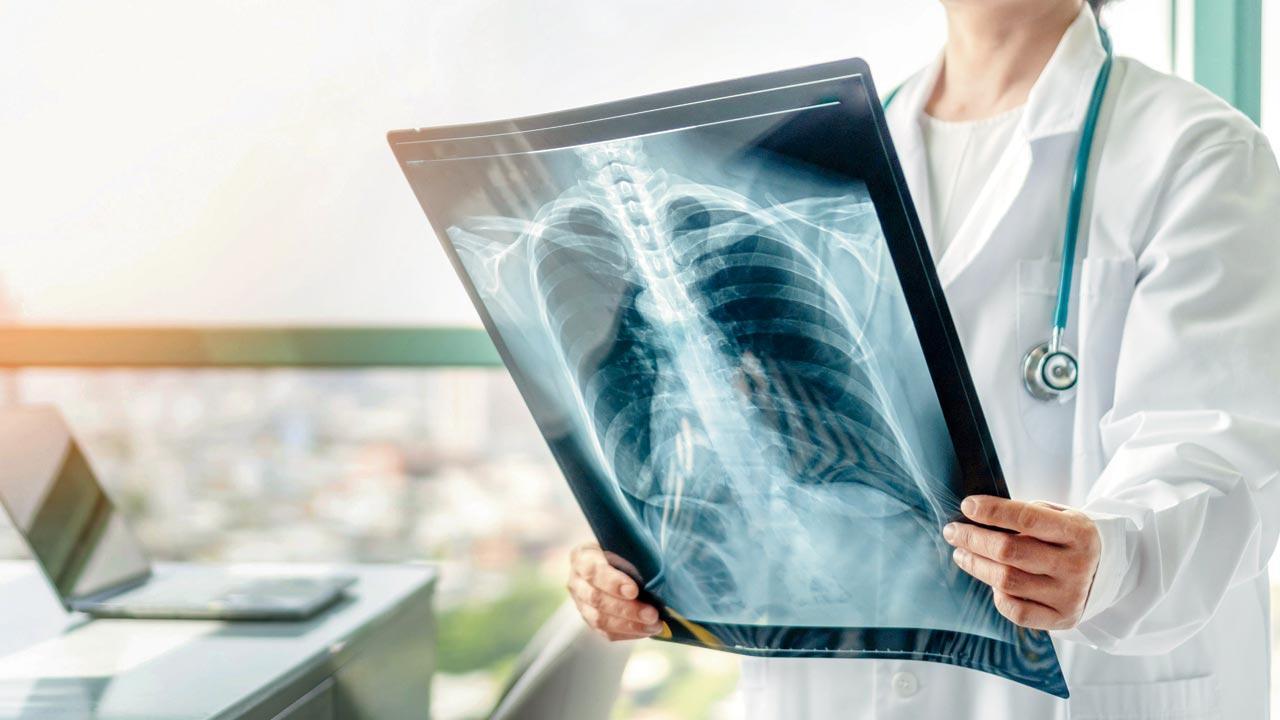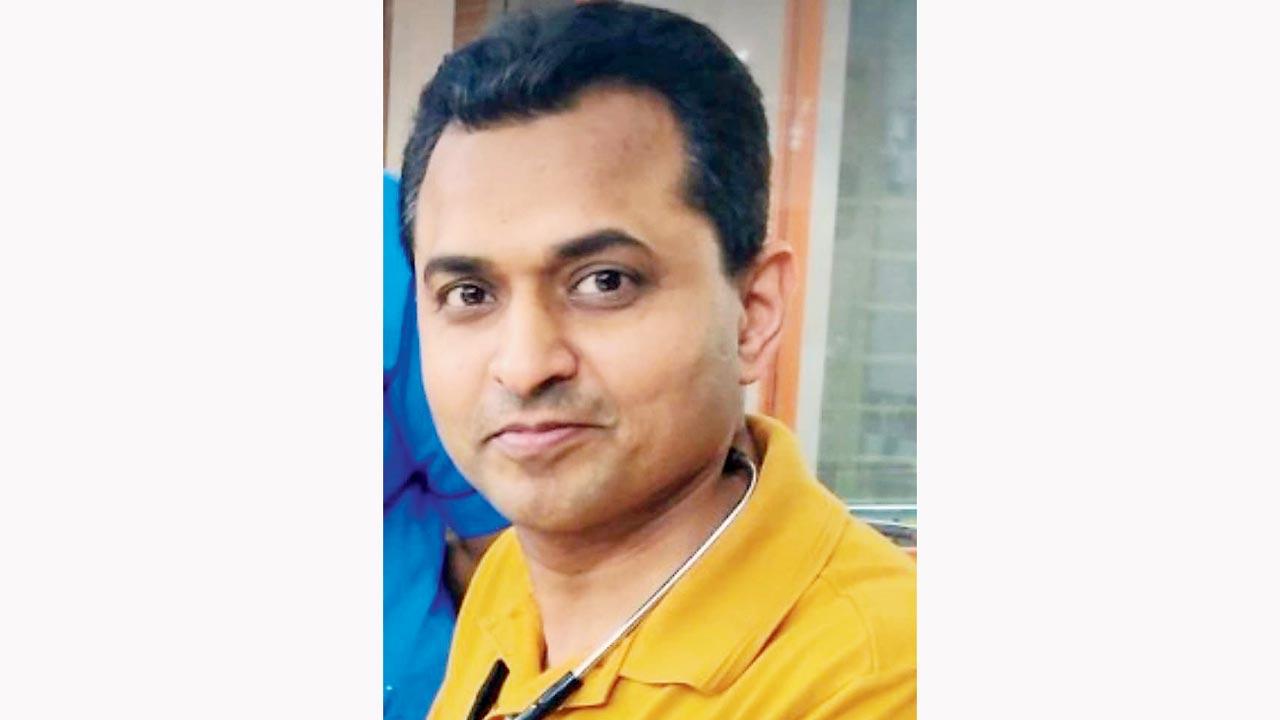Walking pneumonia could affect people who have a weakened immune system, those living in crowded places, asthmatics and those who use tobacco

Walking pneumonia starts with a common cold and cough and gradually the upper and lower respiratory tracts get infected. Representation pic
Key Highlights
- Health experts recommend parents and elders to take precautions as respiratory infections
- The seven cases of walking pneumonia reported by AIIMS were during the period April
- Health experts also pointed out that the recent poor air quality in the city
Even as the Union health ministry has claimed the seven cases of Mycoplasma pneumonia or walking pneumonia reported at the AIIMS - Delhi as not a cause for worry, health experts recommend parents and elders to take precautions as respiratory infections are on the rise this winter. The seven cases of walking pneumonia reported by AIIMS were during the period April to September this year. Health experts also pointed out that the recent poor air quality in the city and MMR region, unseasonal rains may trigger respiratory infections and advise the public to use masks and sanitisers.
ADVERTISEMENT
Dr Wiqar Shaikh, professor of medicine, Grant Medical College and Sir J J Group of Hospitals said that walking pneumonia is common worldwide and a surge in cases is seen every three to seven years. Dr Shaikh added that the Union health ministry has said that the AIIMS cases are not linked to the recent surge of lung infections in China.
What Is walking pneumonia?
Dr Shaikh said that it is a mild form of infection in the lungs which could be caused by bacteria such as Mycoplasma pneumoniae or by virus or even fungus. Indeed, the patient may feel well enough to walk around and carry out daily tasks without realizing that he or she has pneumonia. Dr Shaikh clarified that walking pneumonia generally affects children and elderly people. He said that the disease is seen most often during winter.
 Dr Fazal Nabi, director of pediatrics, Jaslok Hospital
Dr Fazal Nabi, director of pediatrics, Jaslok Hospital
Dr Shaikh explained that walking pneumonia could affect people who have a weakened immune system, those living in crowded places, those who have asthma and people who use tobacco products. The common symptoms of walking pneumonia are sore throat, low grade fever, fatigue, chills and cough. He also added that an X-ray of the chest and or a blood test would diagnose the infection. Dr Shaikh warned that walking pneumonia is contagious and coughing, sneezing or even talking could spread the disease. He said that antibiotics are the mainstay of treatment. Dr Shaikh clarified that there is no vaccine for walking pneumonia.
Poor air quality, pollution
“Walking pneumonia appearing in much larger numbers during this winter is real, irrespective of whether its link with China is established or not. Other important factors, such as the poor high air quality index, the fall in temperatures and unseasonal rain and overcrowding have an important role to play, adversely impacting the full respiratory infections, which start with common cold and cough and gradually the upper and lower respiratory tracts get infected,” said Dr Subhash Hira, professor of global health at University of Washington and a member of WHO consultative group for future pandemic preparation.
World in a quandary
Dr Hira said, “It is in the recent past that the world saw a global shut-down during COVID-19 spikes. The worst ‘shutdowns’ for the longest periods happened in China and as a result it is still reeling from the economic slowdown. Yet, scientists and researchers are surprised that the fresh respiratory epidemic in Beijing and around is being handled by the Chinese government in such a casual manner. Such aloof steps and slow sharing of lab and research information are putting the world into a quandary. Most lessons of wearing masks and hand sanitisation have been lost!”
According to Dr Ketan Vagholkar, professor of surgery at DY Patil Medical College in severely immuno-compromised patients, it can cause serious pneumonia, worsening of COPD, encephalitis and occasionally haemolytic anaemia. “It is advisable that the affected patient though moving around should be under the surveillance of the attending physician. It is best prevented by wearing the mask meticulously and hand hygiene,” said Dr Vagholkar.
Paediatricians caution
Dr Fazal Nabi, director of paediatrics, Jaslok Hospital said, “It is true that this season I am coming across an increase in cases of walking pneumonia but other than a few cases which needed hospitalisation, most of the children were treated on OPD basis. But time taken for recovery depends on the time taken for diagnosing the reason behind the uncontrolled fever, respiratory distress with pneumonia patches, easily visible on the chest x-ray, which indicates infection and pneumonitis.”
“We have last week documented a case of an eight-year-old from the suburbs who had to be admitted in Jaslok with a classic case of pneumonitis. As the regular antibiotics were not working on her and that is when we decided to get the respiratory secretion tested and it was confirmed to be a case of Mycoplasma pneumonia. The patient responded well when the line of treatment and antibiotics were changed,” said Dr Nabi.
Don’t ignore symptoms
Dr Nabi has a word of caution for parents, “With the rise in air pollution, parents need to be vigilant and should not ignore basic signs of cold and cough, which usually get cured within two to three days of medication, but if a child continues to be in distress or symptoms persist, it is better to consult the paediatric physician, as early diagnosis will help in faster recovery of the child.”
High-grade infections
Dr Sagar Warankar, consulting paediatric pulmonologist based in Navi Mumbai, who visits various hospitals in Mumbai and MMR said, “On
an average I come across forty to fifty paediatric cases and unlike earlier where children complained of respiratory tract infections, this season, I see them coming with choked upper and lower respiratory tracts, with fever, indicating high-grade infections.”
Precautions
. Avoid crowded areas and large gatherings
. Always wear a mask when you move outside your home
. Be careful of people coughing and sneezing
 Subscribe today by clicking the link and stay updated with the latest news!" Click here!
Subscribe today by clicking the link and stay updated with the latest news!" Click here!







